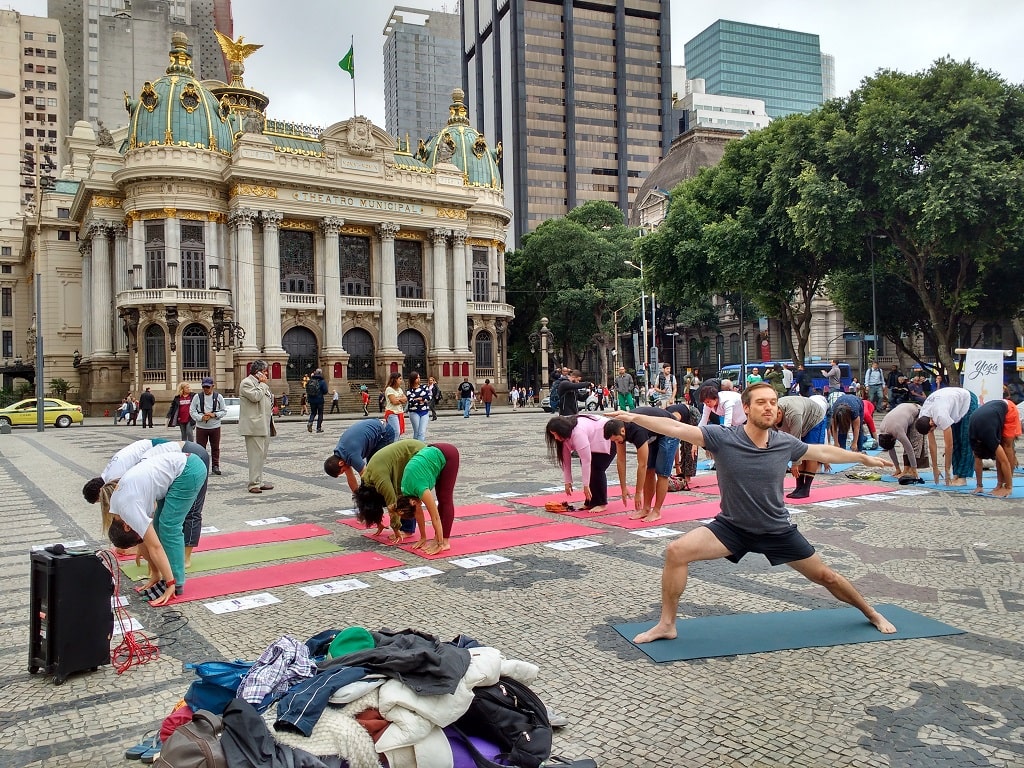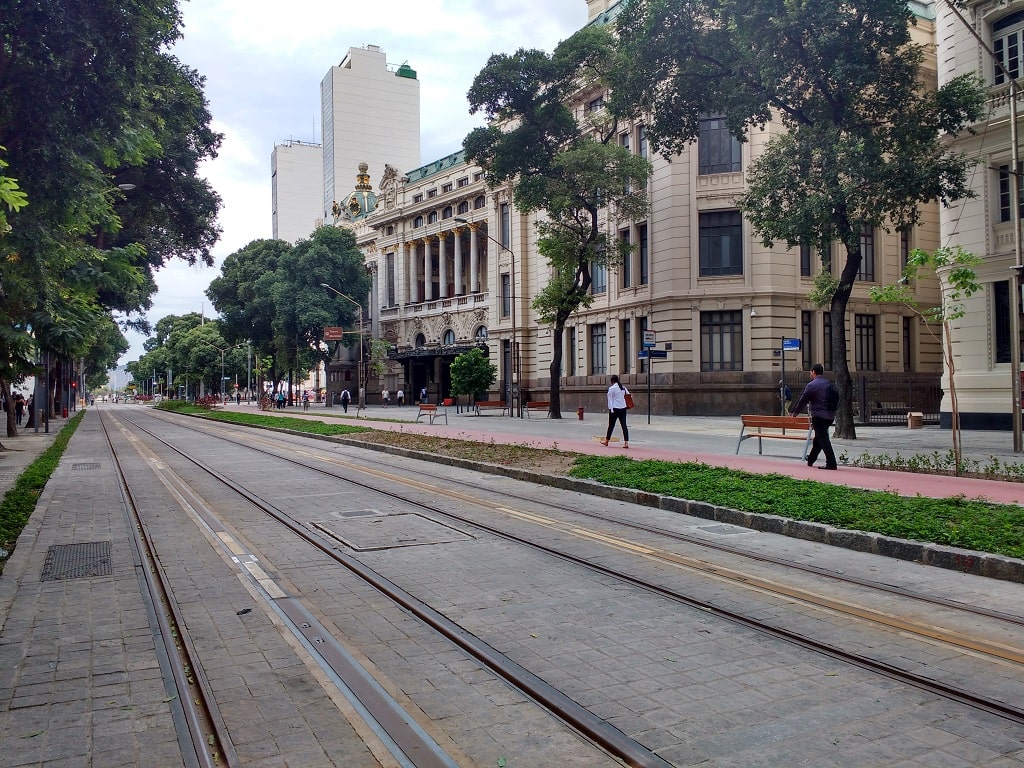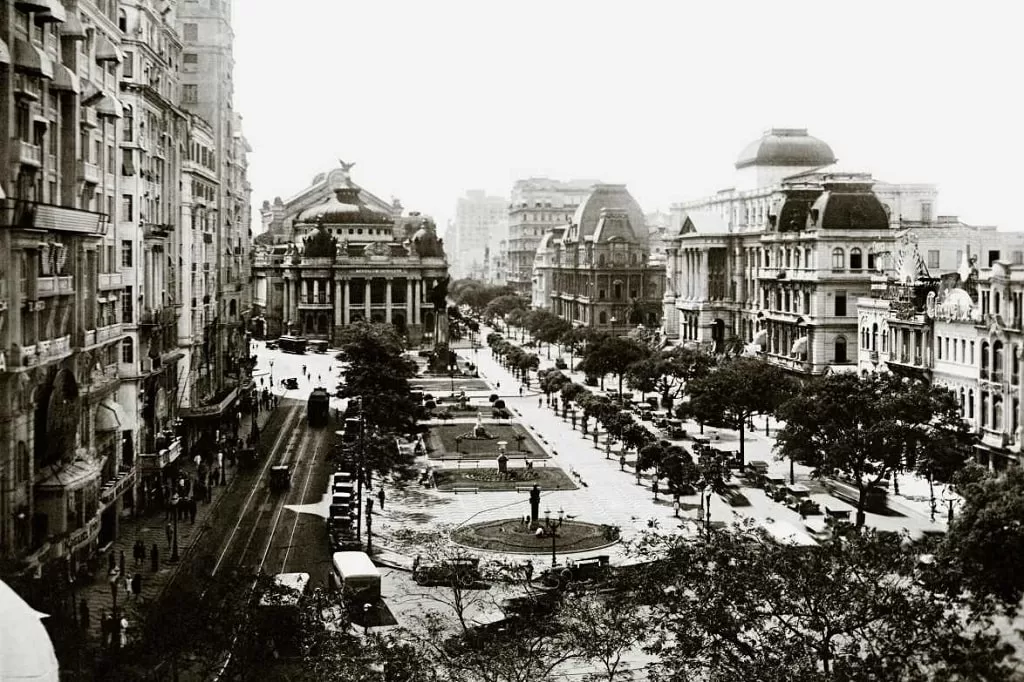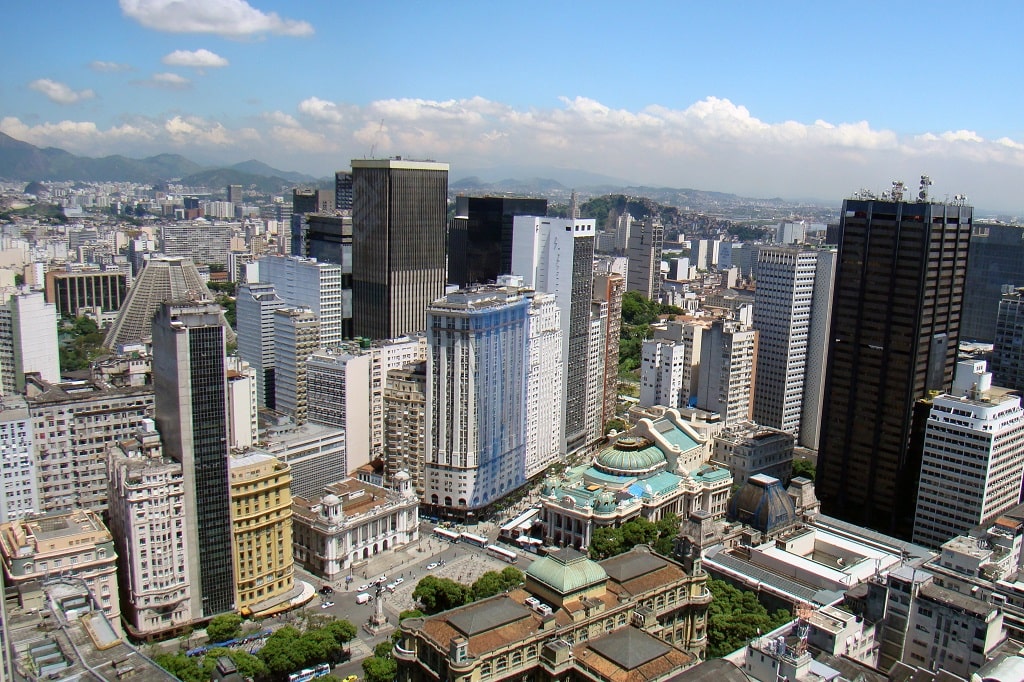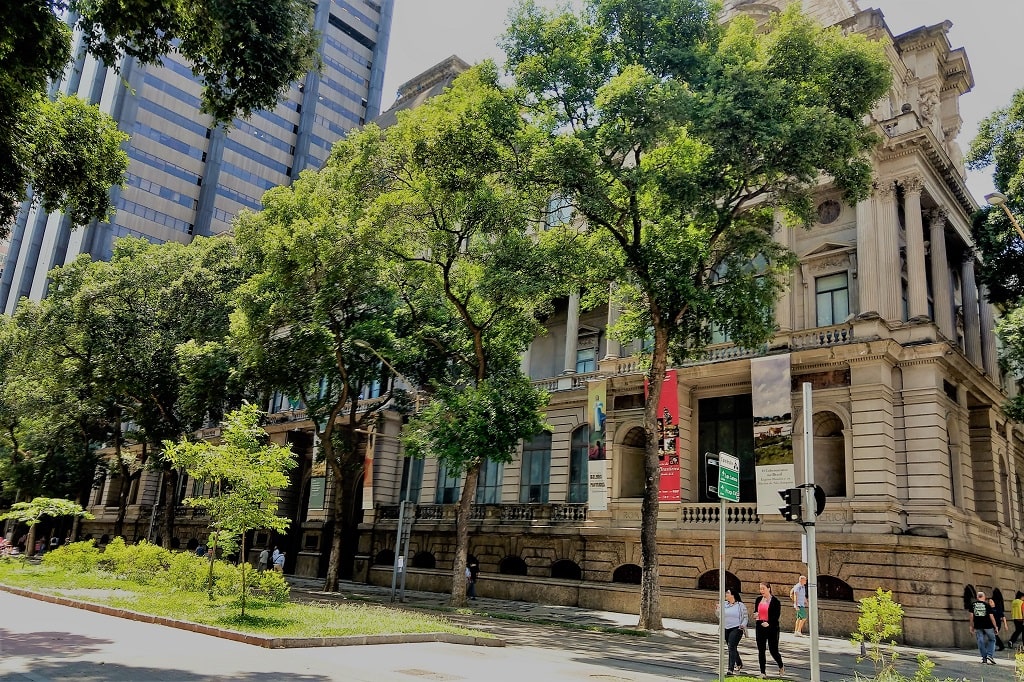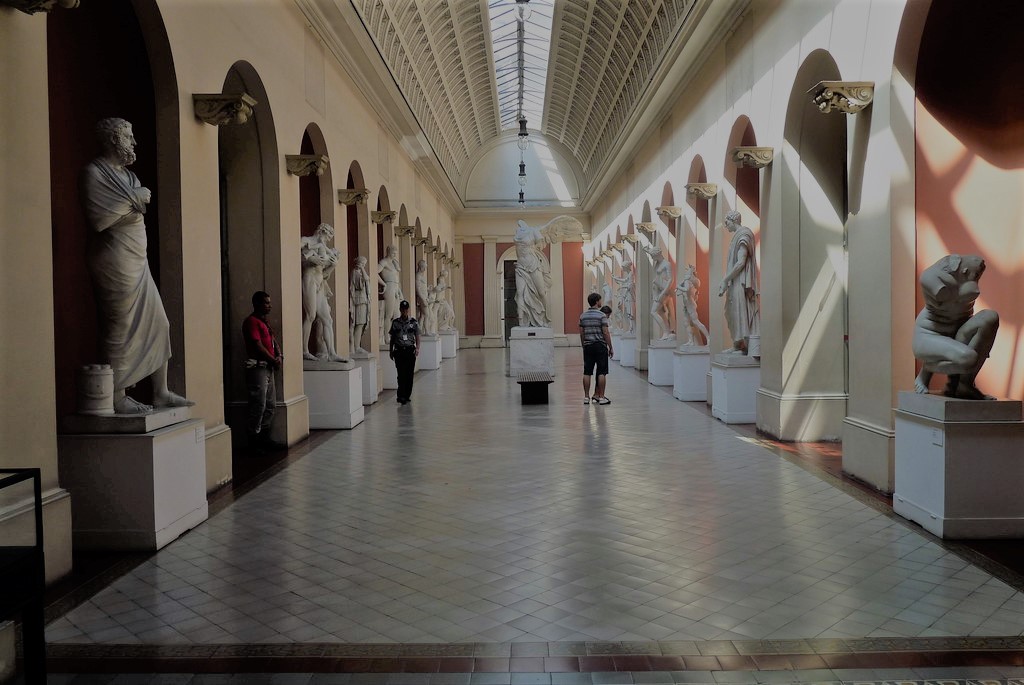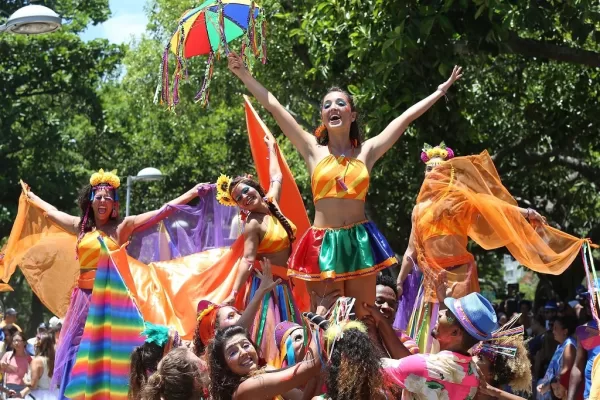Rio de Janeiro has not only beautiful beaches and incredible lookouts. The marvelous city is also full of cultural tours for history-lovers, art lovers and explorers. One of these tours is to visit the Floriano Peixoto Square, known as Cinelândia by the Cariocas, located in the city center. The journey there is simple and easy. The tour is very cheap and, at the same time, eclectic and filled with information. After all, the square is surrounded by historical buildings with recurrent cultural exhibitions.
Keep reading this article to know more about this famous square in Rio and all that it has to offer.
History
Floriano Peixoto Square was the result of the significant reformations promoted by Mayor Pereira Passos in the early 20th century. We were living the “Belle Époque”, and on this time, the idea was to bring Rio de Janeiro closer to the great capitals of the world: Paris and New York. A broad avenue was opened (currently Rio Branco avenue), imposing buildings were erected and older ones that were on the way, demolished. As a result, at the end of the grand avenue, a large square emerged, surrounded by the buildings of the National Library, the City Hall (Pedro Ernesto Palace), the former Federal Supreme Court, Monroe Palace, and the Municipal Theater.
The name Cinelândia, however, became popular only in the 1930s, when dozens of theaters, nightclubs, bars, and restaurants settled in the region, making it a reference in terms of popular entertainment (the translation in English would be something like “movieland”). Today, with the popularization of the shopping malls, the only exhibition room that remains in Floriano Peixoto Square is Cine Odeon. Despite this, for the locals, the place remains as Cinelândia.
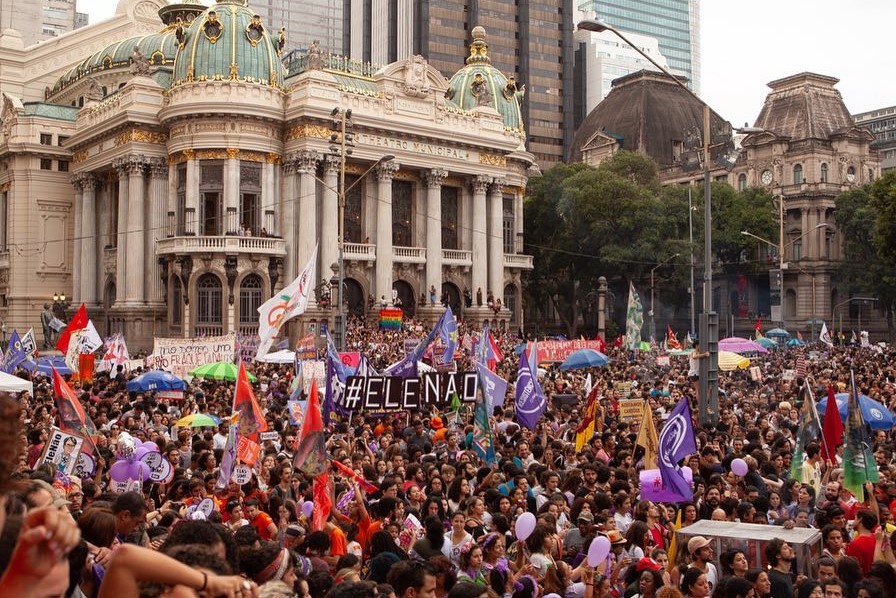
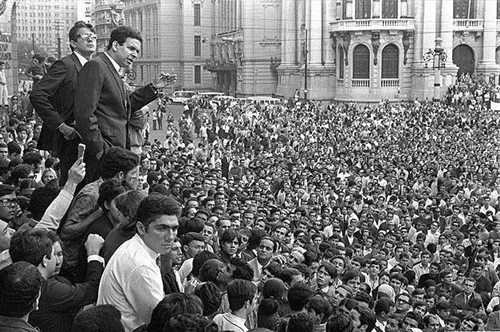
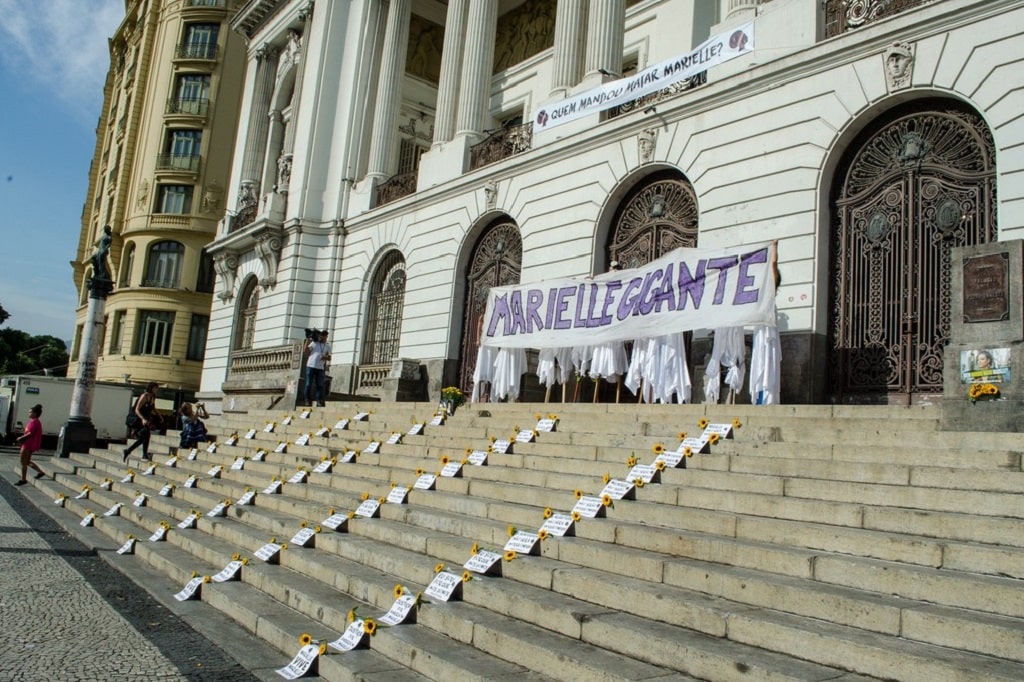
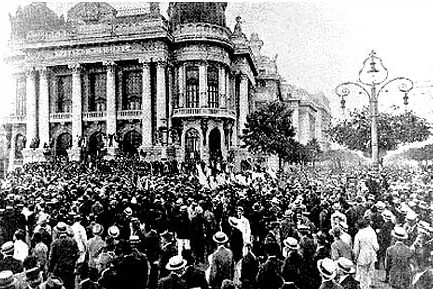
Besides providing entertainment and having historical buildings, Cinelândia has been the place of popular protests by Cariocas and Brazilians, and some of the most important political manifestations in Brazilian history have taken place there.Find below the main attractions of the square:
National Museum of Fine Arts (Museu Nacional de Belas Artes)
In an eclectic style and inspired by the Louvre Museum in Paris, the building of the current National Museum of Fine Arts was opened to the public in 1908. The museum was officially inaugurated in 1937, but its history dates back to the early nineteenth century when the King of Portugal D. João VI came to Brazil bringing many pieces of art that became the first collection of the Museum.
Nowadays, besides holding temporary exhibitions, the museum has one of the most important permanent exhibitions of Brazilian Art, as it brings together works by the artists of the French Mission and the first art school in the country, the Royal School of Sciences, Arts and Crafts, which later came to consolidate itself as the National School of Fine Arts.
** National Museum of Fine Arts:
From Tuesday to Friday: from 10 am until 06 pm Saturdays, sundays and holidays, from 1 pm until 6 pm.
General Entrance: R$ 8,00 Studants and over 60 years old: R$ 4,00 and Family (up to 4 members): R$ 8,00. Free entrance at Sundays. Audioguide: R$ 8,00.
National Library (Biblioteca Nacional)
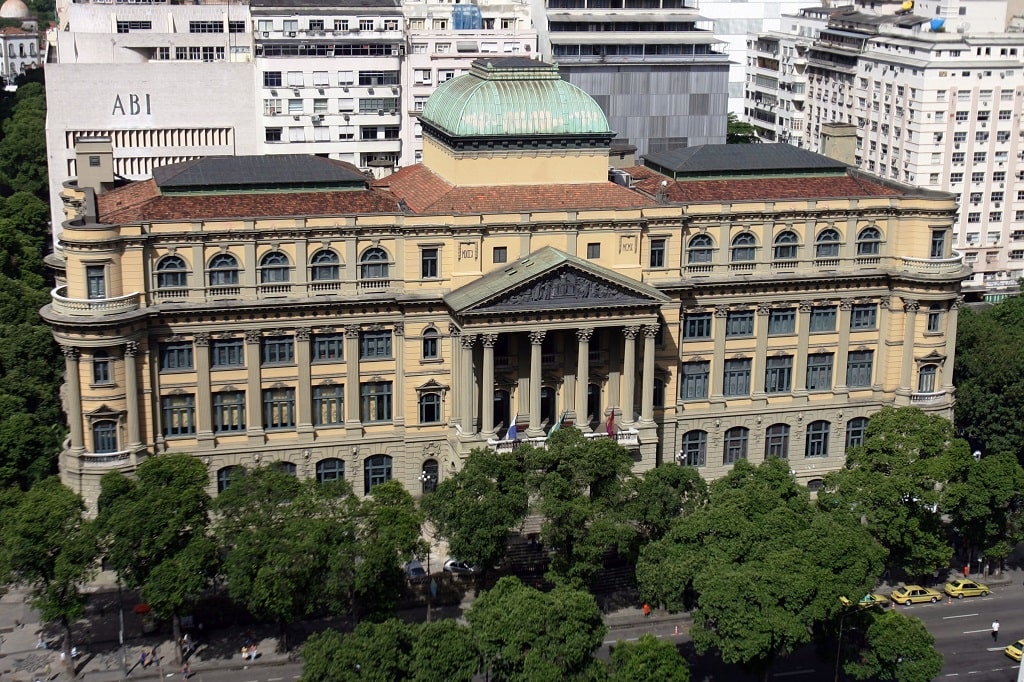

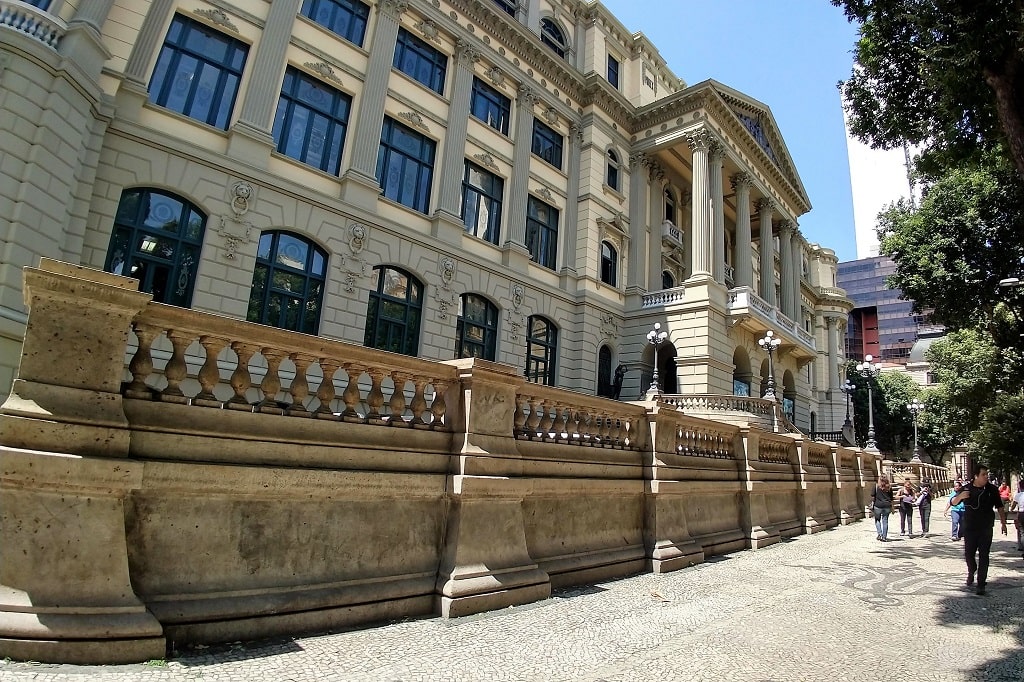
The building, which was inaugurated in 1910, has an eclectic style, mixing neoclassical and art nouveau elements. The history of its collection, however, dates back to the nineteenth century. When the Portuguese Royal Family came to Brazil, brought with them its Royal Library with more than sixty thousand pieces. And this Library was bought by Brazil after the Independence of the country, and today it is part of the collection of the National Library.
For this reason, in addition to being the depository of the bibliographical and documentary heritage of Brazil, the National Library is considered by UNESCO as one of the ten largest national libraries in the world and the largest in Latin America, with more than nine million pieces!
** National Library:
Research and Reading Rooms: from Mondays to Fridays, from 9 am until 7 pm; Saturdays, from 10:30 am until 3pm.
Free entrance. Guided tours must be arranged in advance by calling +55 (21) 2220-9484. They take place from Monday to Friday at 11am, 1pm, 3pm and 4pm in Portuguese; at 12 o’clock in Spanish and at 2 o’clock in English.
Municipal Theater (Teatro Municipal)
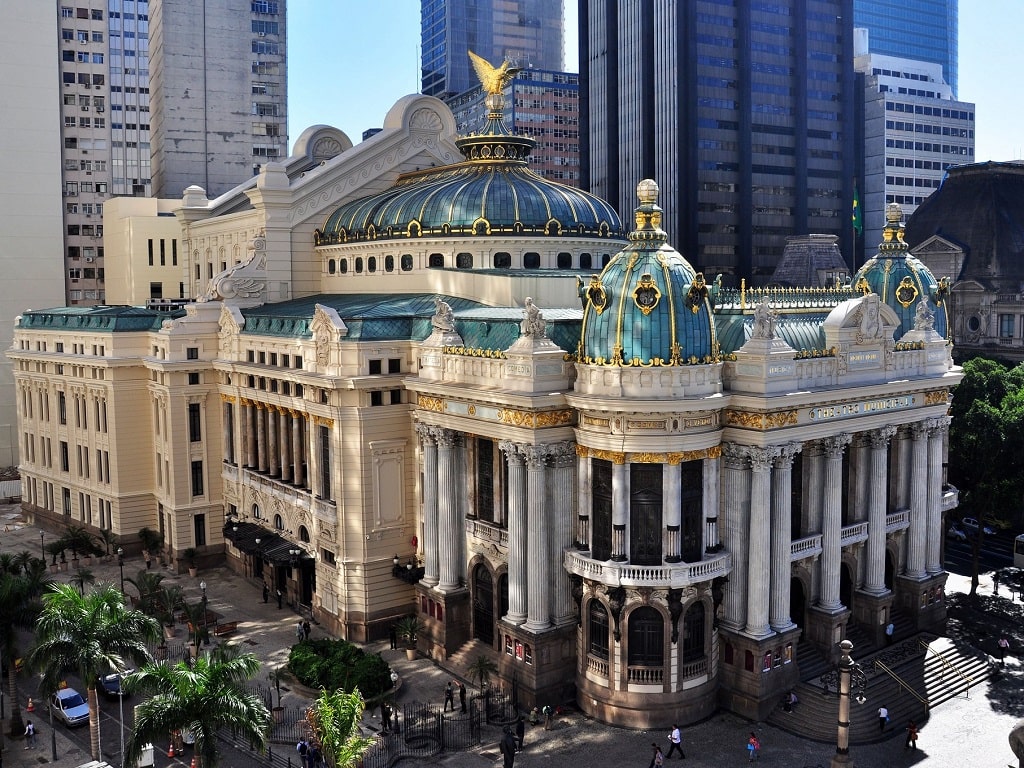
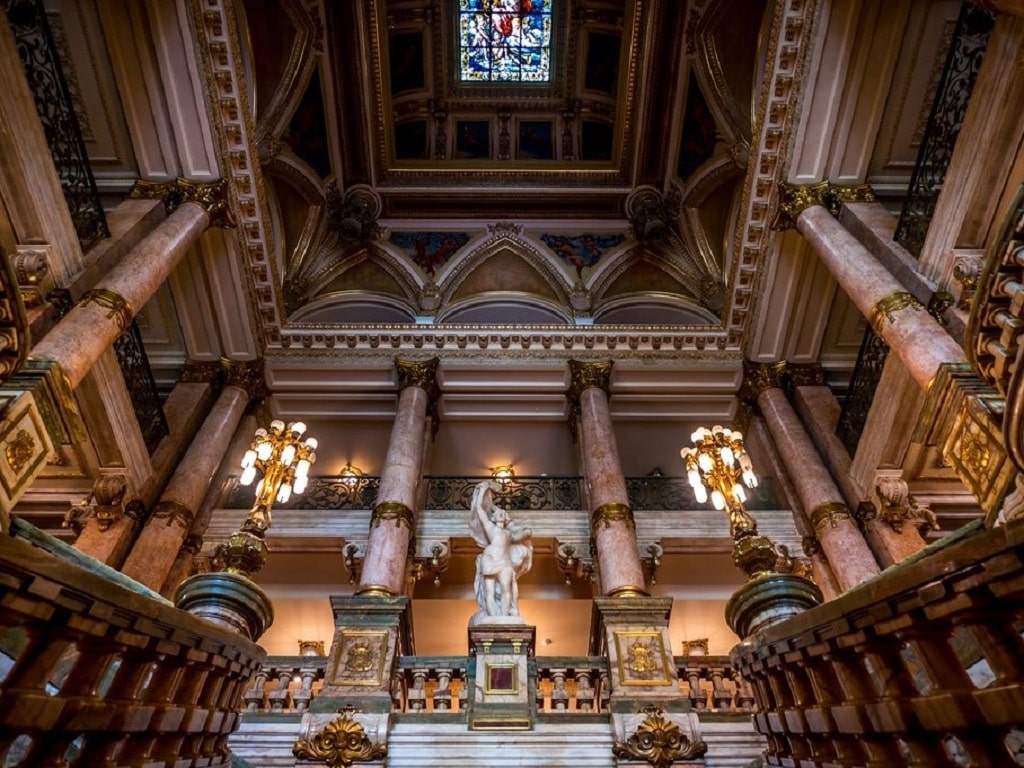
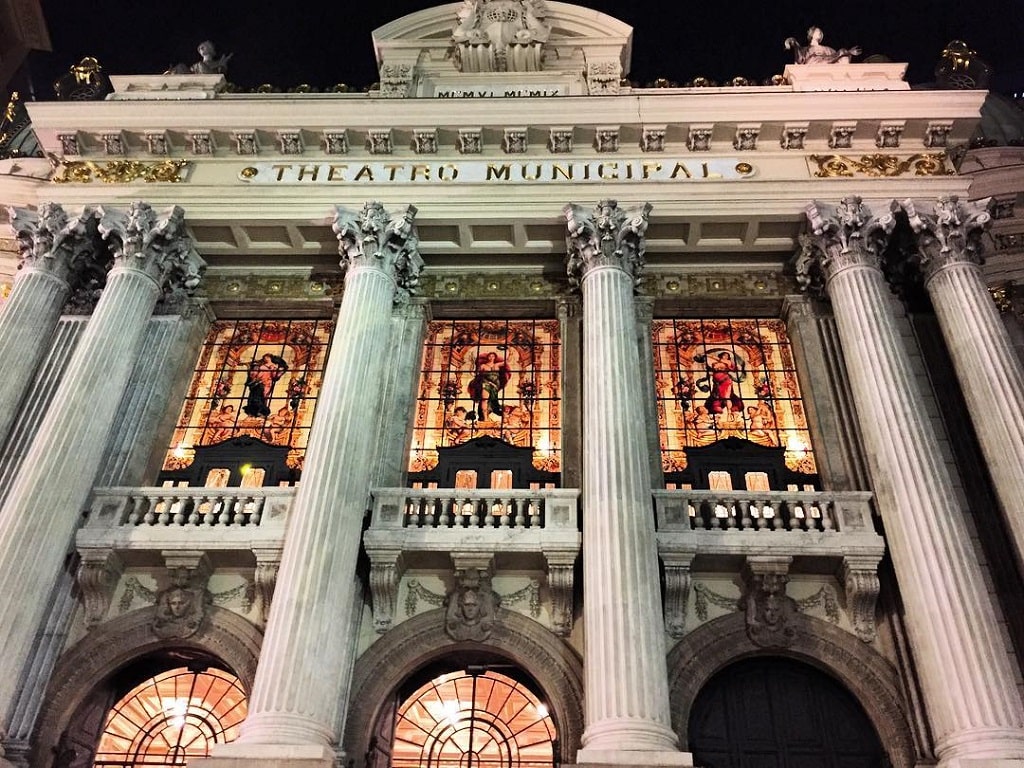
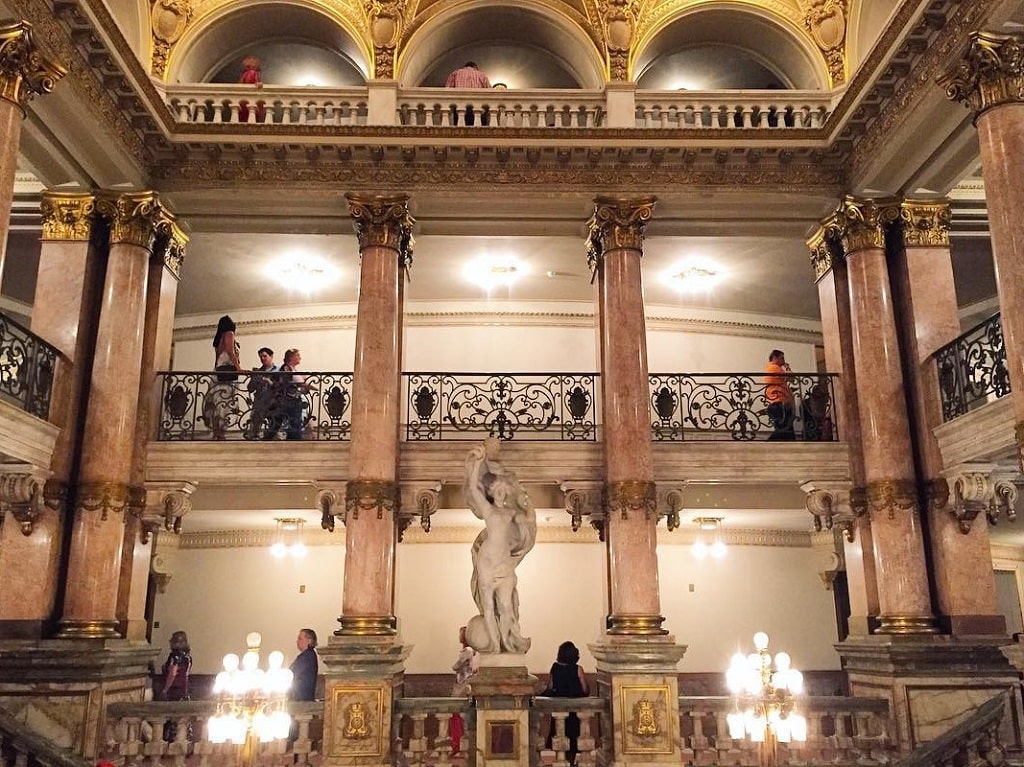
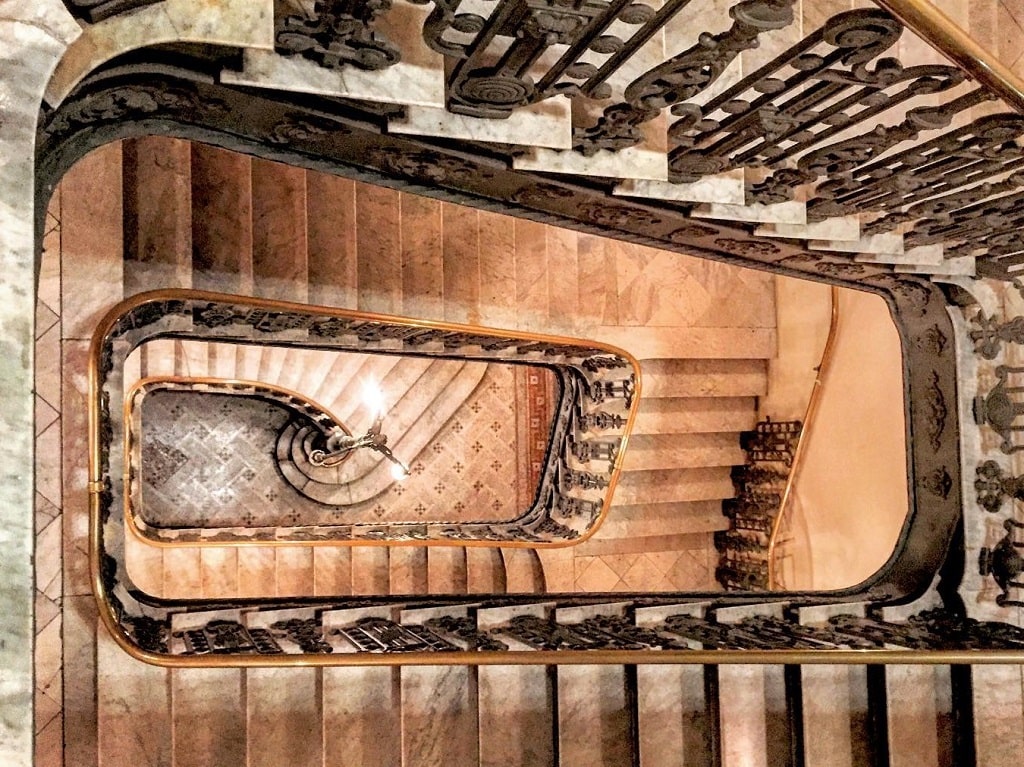
In an eclectic style, its building was inspired by the Paris Opera House and inaugurated in 1909. It is one of the most important theaters in the country because it plays a fundamental role for the Carioca and national culture hosting important artists concerts, orchestras, and ballet companies.
** Municipal Theater:
Guided tours from Tuesday to Friday at 12 o’clock and 2:30 pm in Portuguese and at 16 o’clock in English or Spanish. Saturdays, Sundays and holidays at 11 o’clock, 12 o’clock and 13 o’clock, in Portuguese only.
The visit lasts approximately 50 minutes. The ticket costs R$ 20.00 and the amount can be converted into a ticket for one of the theater shows. Check the schedule of shows here.
Pedro Ernesto Palace - Rio de Janeiro City Hall

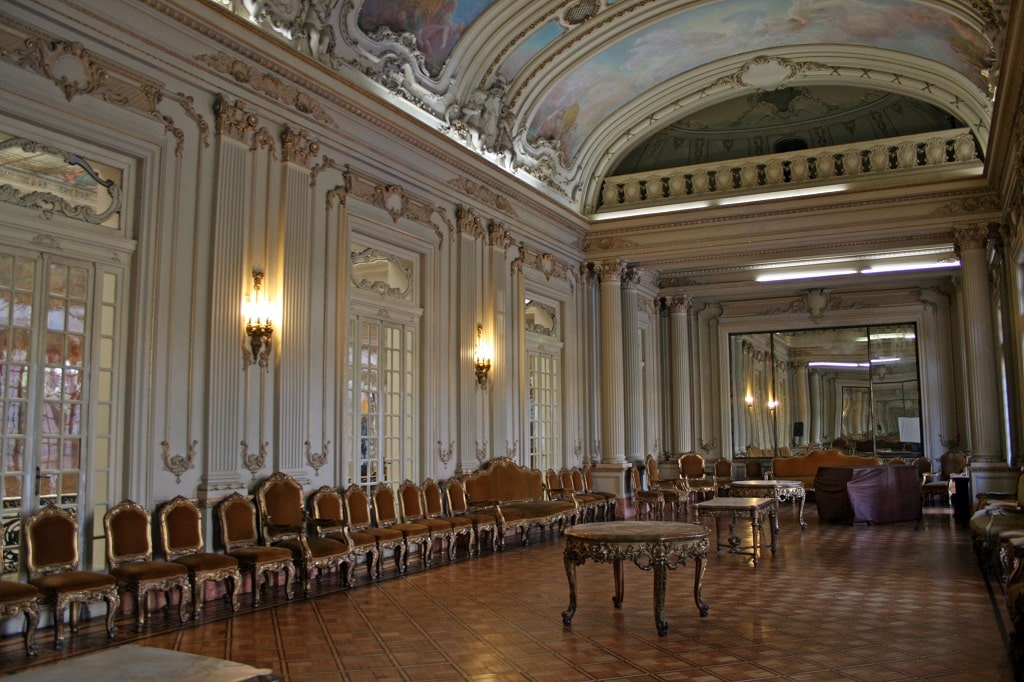
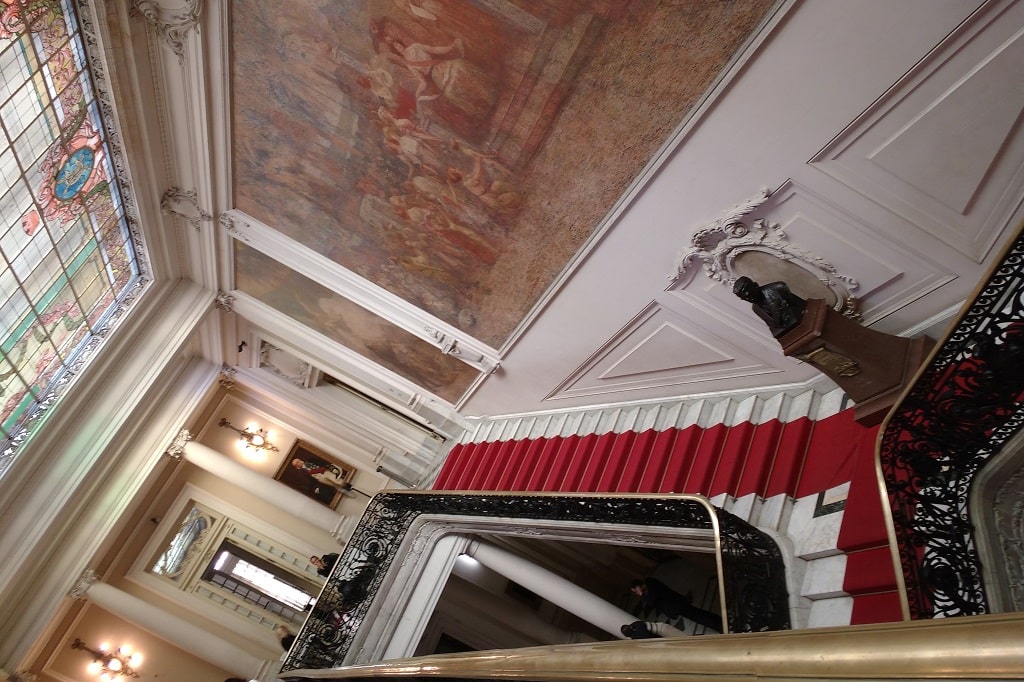
The Pedro Ernesto Palace was built between 1919 and 1923. Since its inauguration, it houses the City Hall of Rio de Janeiro and, therefore, its stairs are a constant spot for protests and popular demonstrations. In an eclectic style, its building mixes the neoclassical styles denominated Louis XIV and Louis XV, who also inspired the Lescot Wing of the Louvre.
** Pedro Ernesto Palace – Rio de Janeiro City Hall: Free guided tour from Monday to Friday, from 10 am to 4 pm in Portuguese, English or Spanish. More information by phone (21) 3814-2205.
Federal Justice Cultural Center (Centro Cultural da Justiça)
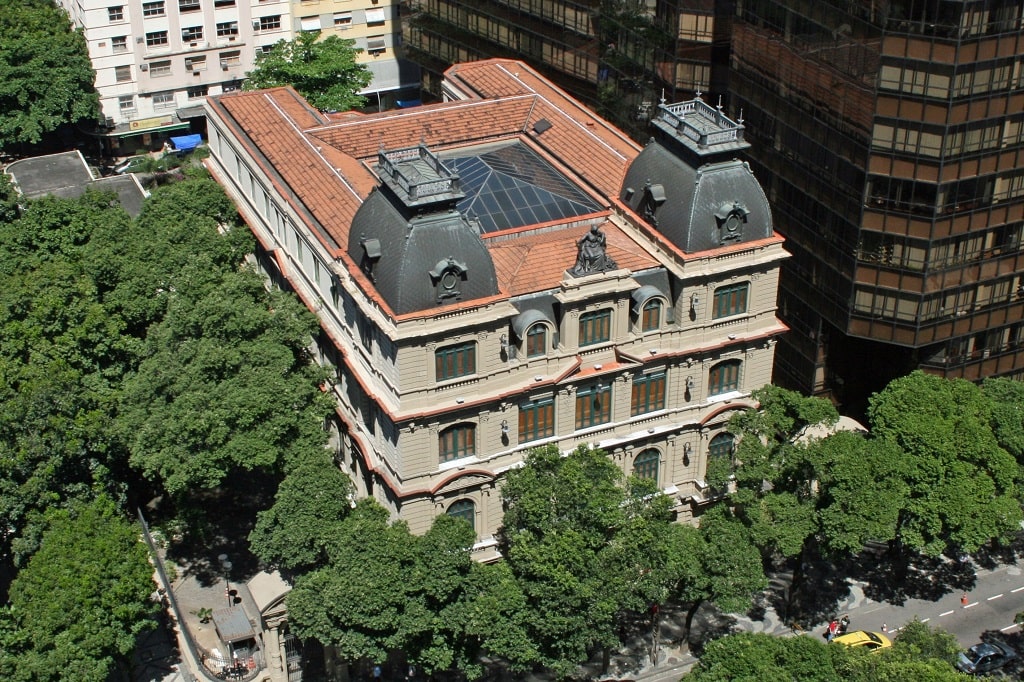
Built between 1905 and 1909, it was initially designed to accommodate the Archiepiscopal Miter, but it was eventually acquired to house the Supreme Court. It was so until the transfer of the country’s capital to Brasilia in 1960. The building also deserves to be visited because, in addition to its exquisite architecture, since 2001 it houses a Cultural Center that promotes access to the various forms of expression cultural events, hosting exhibitions, plays, dance, music and cinema shows, courses, seminars, and lectures mostly with free admission.
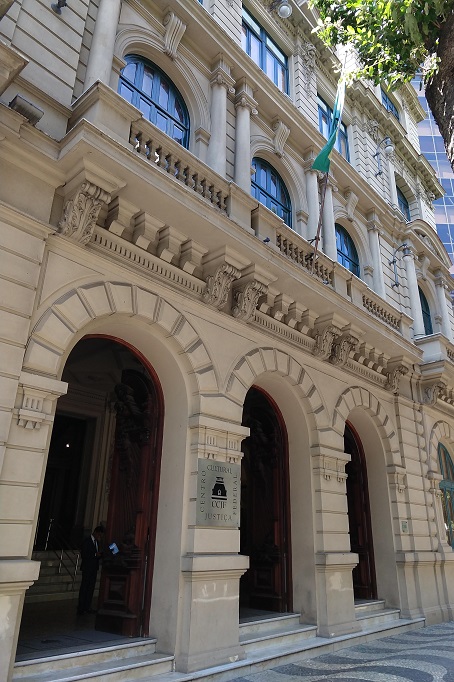
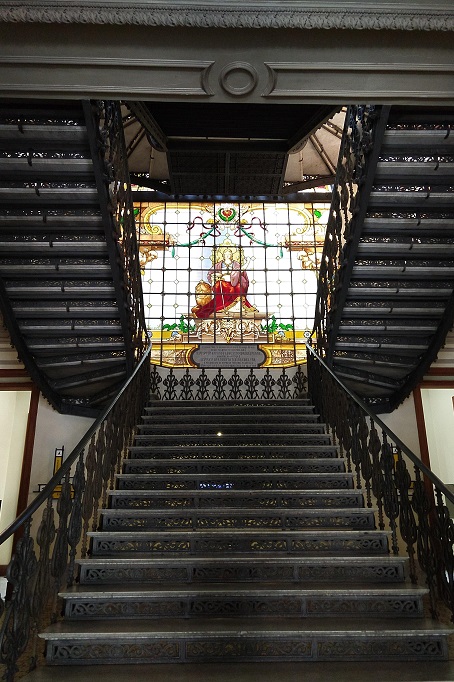
** Federal Justice Cultural Center (CCJ): Open from Tuesday to Sunday from 12 o’clock to 7 pm. Free entrance for visiting the building and expositions. Ticket office for cinema and theater is open from Wednesday to Sunday from 4 pm to 7 pm. See full schedule here.
Odeon cinema (Cine Odeon)
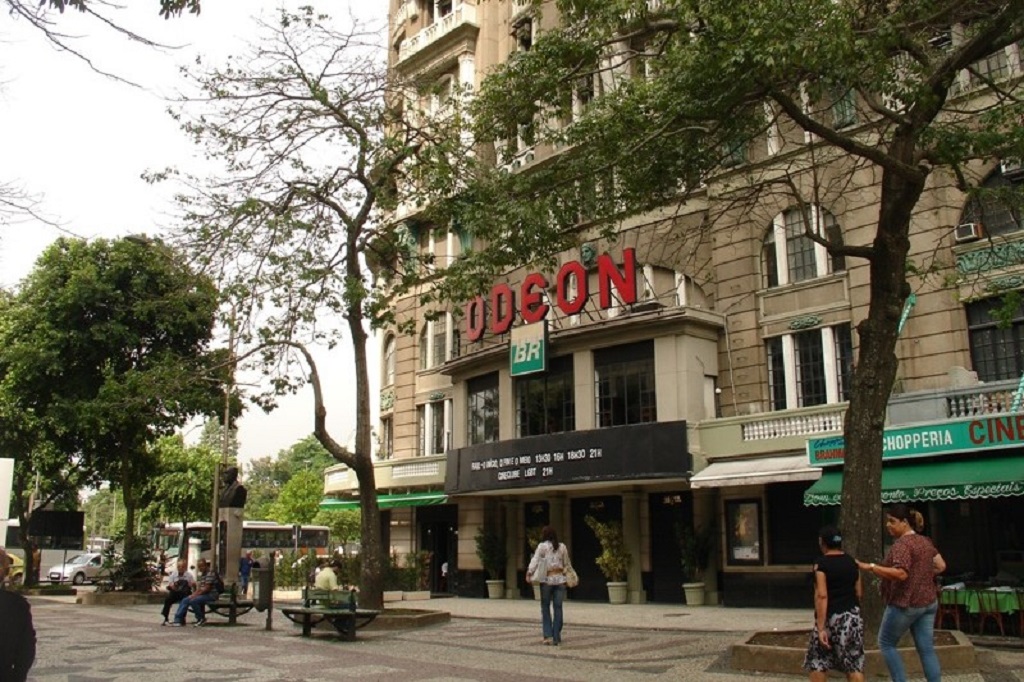
It is the only cinema that remained from the old Cinelândia of Rio de Janeiro. The Odeon cinema had existed since the beginning of the 20th century, but the current building dates back to 1926, the peak of Cinelândia’s cinemas. Today, it houses the Centro Cultural Luiz Severiano Ribeiro – Cine Odeon and is no longer limited to the exhibition of films, but also open for shows, courses, lectures, etc. It is in this cinema where the Festival do Rio (Rio international film festival), Rio de Janeiro International Short Film and Anima Mundi festivals take place.

Carioca Tip:
In the square surroundings, there are many other buildings of great architectural interest, though some not as well preserved as they should be. Be sure to note the Wolfgang Amadeus Mozart building, popularly known as Amarelinho, which houses a bar with the same name in its ground floor; and the Francisco Serrador building, built in 1944, which stands out for its circular shape. In the center of the square is the monument erected in honor of Marechal Floriano (second president of Brazil), inaugurated in 1910.
How to get there
Getting to Cinelândia is very easy. After all, it has a subway station of line 1 of the same name, with exits right in the middle of the square. Several bus lines stop in its surroundings and, since the reforms carried out for the 2016 Olympics, the square also has a VLT station, a light rail which connects it to the Bus Station, Mauá Square and the Olympic Boulevard, and Santos Dumont Airport.

Carioca Tip:
Like every tourist and busy place, Cinelândia is one of the places where you should watch out for pickpockets. Avoid drawing attention to yourself with cameras and an attitude of carelessness. Be careful with cell phones, too! As the region is the central business district of the city, tourists end up attracting the attention of malicious people. → Learn more safety tips in our free e-book “Staying Safe in Rio | 8 tips from Cariocas to safely explore Rio de Janeiro”.
Where to eat
Nowadays, Cinelândia is also the financial and business center of Rio. Therefore, there are many restaurants and bars options that usually get crowded at happy hour. Go to the Elias Bar if you want to try the food system “a kilo”, very famous in Brazil → You serve yourself in a large buffet and pay only what you consume, according to the weight of it. The specialty of the house is Arabic food, but the buffet is varied and includes Japanese food and a delicious barbecue. The place is not at all touristy and is always crowded with locals who work in the neighborhood.
For a more refined lunch, head to the Navy Club restaurant. If you prefer the traditional-historic, choose to eat a galeto at the counter in two addresses: Central Galeto or Liceu Galeto.
The traditional Amarelinho restaurant can be a good option to have a chope (tap beer) while looking at the beautiful square. But the food there used to better.
** Bar do Elias: Evaristo da Veiga Street, 22. From Monday to Friday, from 11 am to 3:30 pm.
** O Navegador: Rio Branco Avenue, 180 – 6º floor. Inside Navy Club. From Monday to Friday, from 11:30 am to 3:30 pm.
** Galeto Central: Rio Branco Avenue, 156 – 3º floor, Stores 327/328. From Monday to Saturday, from 11 am to 10 pm.
** Galeto Liceu: Senador Dantas Street, 118 – Store A. From Monday to Friday, from 11 am to 9:30 pm.
–> Follow us on Instagram to keep it up to our news -> Soon we will have a post about the best rooftops in Rio, some located in Cinelândia.
Where to go from there
Because it is located in the city center, Cinelândia is an easy place to combine with many other attractions in Rio de Janeiro. Your itinerary, however, will be more efficient if you combine it with a tour around Santa Teresa neighborhood, one of Rio’s 10 must-see attractions. After all, the Selarón staircase and the Arcos da Lapa are very close to Cinelândia.
Other possible combinations are the Olympic Boulevard, the Banco do Brasil Cultural Center, the National Historical Museum and, at the end of the day, enjoy a samba circle nearby – choose your own in this article here – or enjoy one of the many bars in Lapa , where most of Rio’s Bohemia is concentrated.
